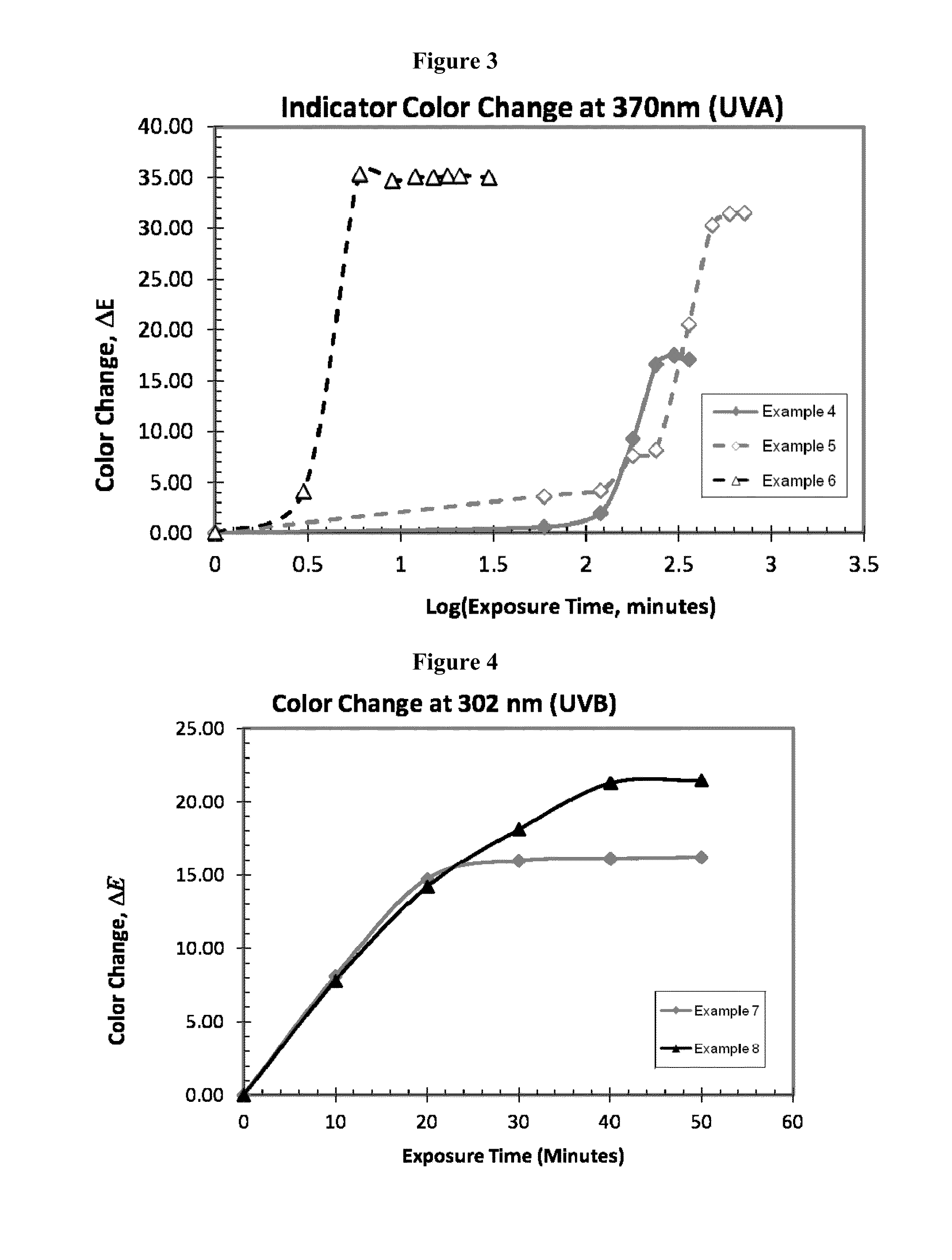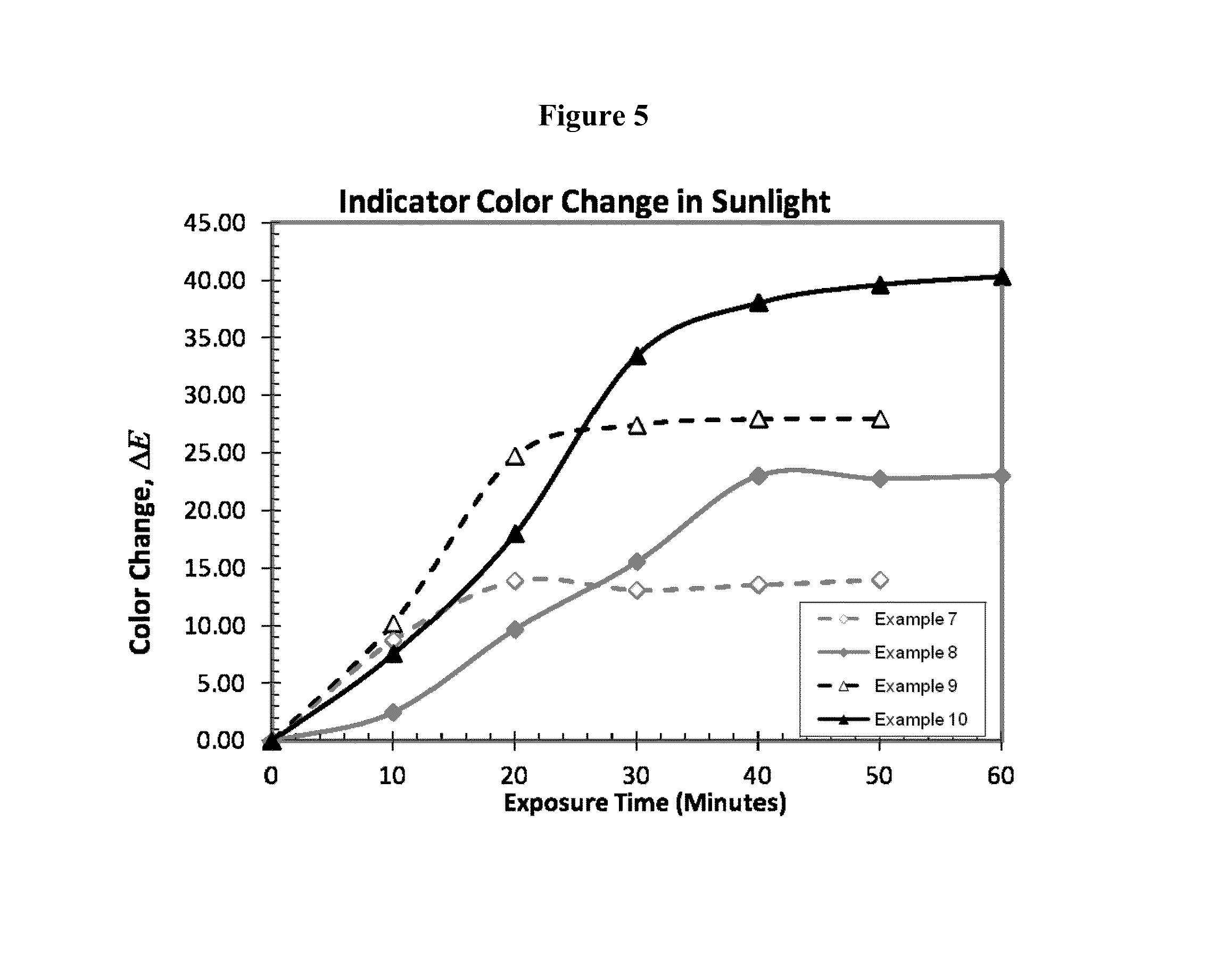Doses of low intensity or duration can still accelerate aging of the
skin, cause burns, or lead to
cancer if the lower doses are repeated often.
UVC exposure from
sunlight is limited by the absorbing effects of the
ozone layer; however, UVC exposure can also result from the use of germicidal UV lamps.
Ultraviolet exposure of any
wavelength can be harmful to individuals regardless of
skin type; however, the effects of UV can be particularly damaging for individuals with lighter skin tones and for children.
Tanning beds offer the same health risks as
sunlight and while many tanning beds offer timers to regulate exposure and can regulate lamp output according to
skin type, overexposure is a common occurrence.
Typically, timers are not useful, as the level of UV exposure will change as the distance from the UV source changes; therefore, it is desirable to have a means of evaluating
radiation exposure without the use of a
timer.
Outbreaks can be fatal, and outbreaks in hospitals and
nursing homes are particularly dangerous.
One problem that arises when disinfecting in the case of MRSA is making sure that all impacted areas have been sufficiently exposed to
UVC radiation.
These meters are also incapable of displaying records of anything other than the current conditions without connections to computers and appropriate
software.
Meters vary greatly in price and the cheaper meters are restricted to immediate intensity measurements only.
The downside to inexpensive meters is that the devices themselves offer no means of
record keeping, and therefore, most commercial meters are unable to account for fluctuations as they only make instantaneous readings and do not
record total exposure over time.
Another downside is that the level of UV may be transient and extremely high exposure levels can be missed if they occur after the
machine is turned off or not read.
While more expensive meters may offer the capacity for data
logging, they become difficult and costly to operate, maintain, calibrate and manufacture.
It is also impractical for individuals to carry large meters on their person when exposed to sunlight or tanning beds.
All meters have the downsides of potentially being out of calibration and producing faulty readings, or being restricted in the location where they can be placed (for example, inside a UV
nail polish curer) because of the size of the meter.
It is also impossible to put meters that are instantly readable in enclosed places, such as disinfection chambers or dryers, that have no viewing window (since viewing windows could allow for UV exposure).
Plastic films for use in a UV badge actinometer have been developed using polysulphones (Davis, A., Deane, G. H. W. & Diffey, B. L., “Possible
dosimeter for ultraviolet radiation,” Nature, 261, 169-170, 1976); however, polysulphone based dosimeters are reversible and are therefore undesirable due to their inability to accurately measure intermittent doses and cannot be stored for
record keeping purposes.
1977) have been used; however, these PVC based thin films do not respond to exposure at 254 nm (and therefore cannot be used to detect germicidal radiation), and show nearly no change in response to UV radiation in the range of approximately 300 to 350 nm.
The major downside that all thin film based approaches share is that they all require sophisticated equipment that can measure
absorbance in order to determine the responses of the film to UV exposure.
Because of these equipment requirements, thin films cannot be used in enclosed spaces.
The downsides of using thin films is that thin films are more costly to manufacture, they take longer to biodegrade (if they degrade at all) and they take up more space in landfills, many thin films cannot be as easily written on as paper substrates, the thin films transition from the processed form back towards the unprocessed state, UV sensitive thin films cannot be offset print on to contain additional information, and the sensitivity of thin films to UV radiation is difficult to adjust.
For instance, the pink film will undergo reversion back towards the colorless state, the change from a colorless to a
colored state is imprecise because of the color reversions that the films undergo when the ultraviolet source is removed therefrom (requiring additional equipment and calibrations to evaluate), the film cannot be adjusted to respond to different lengths of exposure, a single film cannot be modified to respond to different wavelengths of
ultraviolet light, the thin film has restricted applications, and the performance of the film is sensitive to small fluctuations in temperature and
humidity.
A significant downside is that after undergoing a transition from colorless to pink, the prior art devices will undergo reversion from the processed pink form back towards the original colorless state.
The reversion is undesirable as it can provide unclear results when analyzed.
The thin films are also sensitive to the entire range of ultraviolet radiation and cannot be made to differentiate between exposures to UVA / UVB / UVC.
Another downside is that the transition from colorless to
colored that undergoes any degree of reversion is imprecise and cannot be evaluated by the
human eye, instead requiring complex equipment and a detailed procedure.
This approach is generally not useful for the general
population for detecting exposure to sunlight or UV radiation from tanning beds or germicidal lamps as the individual needs special training, skills, and equipment, and must operate the equipment while being exposed to the radiation.
Another downside is that the reactivity of the thin films to UV radiation cannot be readily adjusted.
Specifically, the time required to cause the film to transition from colorless to pink cannot be modified assuming that the intensity of
wavelength of the ultraviolet source remains constant.
An additional downside is that differentiating between exposures to UVA / UVB / UVC requires the use of a second thin film, which complicates the measurement procedure and can lead to faulty readings if the films are not precisely arranged.
Also, the static reaction to ultraviolet as well as the fact that the films cannot be printed on any substrate, as that would impede the transmission of the radiation used to calibrate the film's reaction, prevents films made using this approach from being modified to react differently depending on the desired application.
There are several downsides to this approach as well to using these tetrazolium based thin films.
The first is that the tetrazolium based thin films do not demonstrate a color change based on the total accumulated
dose as the thin films show some reversion to the colorless form when the ultraviolet source is removed.
Thus, the thin film based approach would provide unclear results if the ultraviolet radiation was removed for a lengthy period of time (a power outage could cause such an incident).
Another downside of this approach is that the change in appearance from “colorless” to “pink” is unclear and does not allow for quick visual analysis of the film.
A transition from colorless to
colored is imprecise as it is hard to gauge when a color is dark enough to be considered an end point, in particular because these films undergo some degree of reversion back towards the colorless form after the radiation source is removed, and therefore, analysis of the film cannot be performed without the use of a spectrophotometer or other means of measuring color density.
Another downside to the thin film approach is that the films have a static reaction to ultraviolet and the reaction cannot be modified to react differently depending on the desired application.
An additional downside is that the thin films will react to all wavelengths of ultraviolet radiation and cannot be used to distinguish between UVA and UVC exposure.
Also, the thin films created were sensitive to
humidity and require calibration measurements prior to use as a UV
dosimeter, therefore, the device would not be viable in any environment where
humidity fluctuations are common, such as industrial printing complexes.
Another limitation of the previous approach is that the thin film is restricted to radiation doses between 0.04 and 1.5 J / cm2, where doses can range up to hundreds of J / cm2.
 Login to View More
Login to View More 


